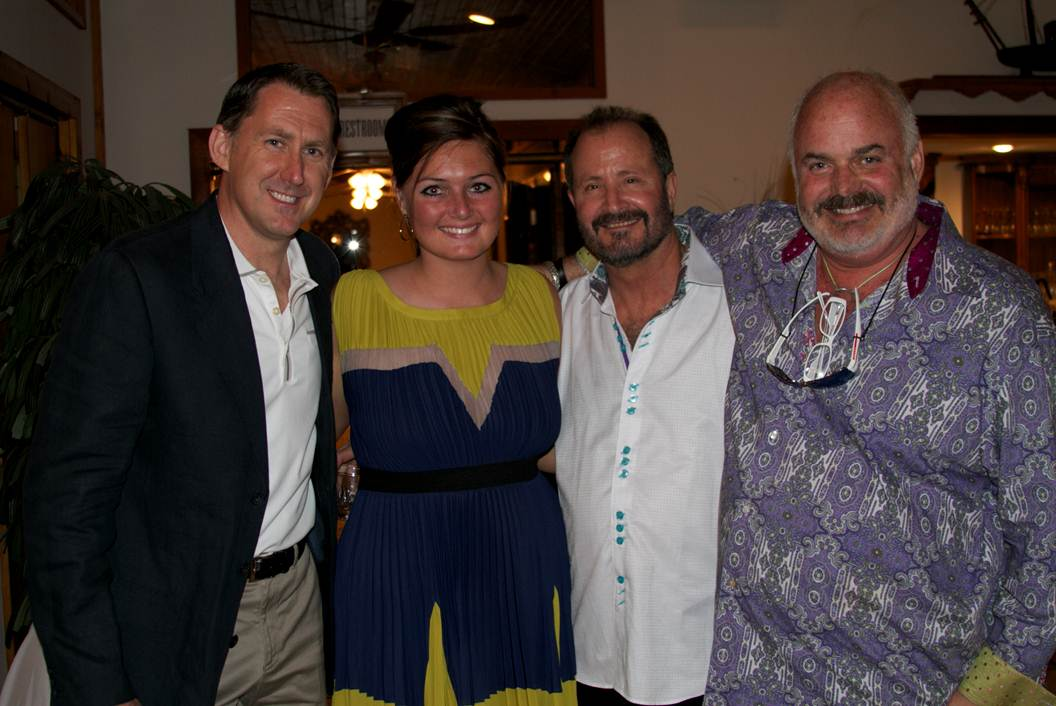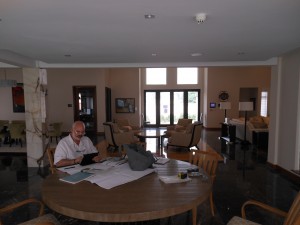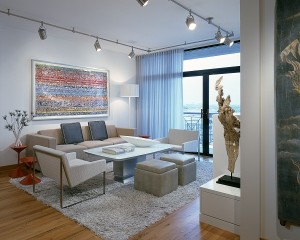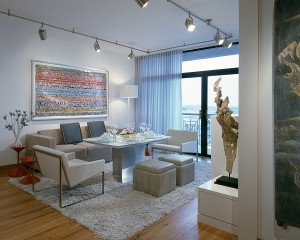 Here I am with Cannon Frank’s project manager, Michael, and Jason Spohn from JDS Ltd. in the garden of one of our current projects. It’s a 28,000 square foot French Louis XVI chateau in the western suburbs. This is a small passage area to the backyard from the lower level of the house. The horizontal, espaliered trees grow Macintosh and Gala apples.
Here I am with Cannon Frank’s project manager, Michael, and Jason Spohn from JDS Ltd. in the garden of one of our current projects. It’s a 28,000 square foot French Louis XVI chateau in the western suburbs. This is a small passage area to the backyard from the lower level of the house. The horizontal, espaliered trees grow Macintosh and Gala apples.
Cannon Frank nominated for Chicago Interior Design Firm of the Year!
We just found out that Cannon Frank was nominated to be the Chicago Interior Design Firm of the Year! This is a recognition program acknowledging interior design talent who have made an an impact on Chicago’s design community. Ten nominees were selected by a jury of representatives from the Design Center at the Merchandise Mart and Luxe Interiors + Design magazine. We are honored to be included among such elite designers!
Designs 4 Dignity
Great Article about Cannon Frank in CS Interiors!
Check out the current issue of CS Interiors for a feature entitled “How to Design Around a Museum-Worthy Collection” featuring one of our favorite projects. Click on this link http://media.modernluxury.com/digital.php?e=HBCH (you’ll have to scroll to Page 80) to read all about it! We can also send you a copy of the magazine, too, if you prefer. Let us know by emailing timelessdesign@cannonfrank.com.
Ghana it is!
We’ve always liked to call ourselves an international interior design firm, but who knew we’d have so much business in Ghana? After our initial project there, we’re now working on the corporate offices for those clients as well as the new home of our clients’ friends. It’s all been wonderful…except for the long plane rides to Africa!
I’ll be posting photos soon…stay tuned!
Spring Fever a huge success!
L to R: Russell Bodnar of ARS Advertising, Kate Fortney of eluminate creative, Cary and me. We are thrilled with the turnout for our Spring Fever event this past weekend held at Whittaker Woods Golf Club in New Buffalo, MI. We raised over $125,000 for the Robert R. McCormick Boys and Girls Club of Chicago and the Boys and Girls Club of Benton Harbor, MI. The evening was very festive with entertainment provided by comedienne Roxy Bellows, interactive dinner stations and a live auction (one of the best auction items of the evening was dinner for 10 at Chef Joho’s home — prepared and hosted by him!). Thank you to everyone who supports this wonderful cause.
We are thrilled with the turnout for our Spring Fever event this past weekend held at Whittaker Woods Golf Club in New Buffalo, MI. We raised over $125,000 for the Robert R. McCormick Boys and Girls Club of Chicago and the Boys and Girls Club of Benton Harbor, MI. The evening was very festive with entertainment provided by comedienne Roxy Bellows, interactive dinner stations and a live auction (one of the best auction items of the evening was dinner for 10 at Chef Joho’s home — prepared and hosted by him!). Thank you to everyone who supports this wonderful cause.
Out of Town Experiences

For the Client
You will want the same exceptional service you receive from your local designer, but you will wonder if this is a smart move. It definitely is the smarter move. Finding a different designer in your remote locale means you will have to work with that designer while you are in that locale, and working — instead of relaxing, golfing and enjoying your home — you will be shopping and not finished with the project. Working with your local designer who knows you, knows your lifestyle and understands your preferences only means you will need to spend a little money to have them travel to see the residence. You can always have someone locally work with your designer if photos or dimensions are needed.
For the Designer
You will need to determine what your day rate will be and be prepared to work almost every waking moment you are there so you don’t have to charge another day. Keep your pricing low, but fair to you both, and make sure you take hundreds of photos and dimensions. Shopping with your client here and shipping everything there is easy to do and in some cases, the manufacturers are closer to their new home than to here!
We just finished the first phase of a grueling installation in Accra, Ghana in Africa on a project we started almost two years ago, for some of our favorite clients. What made this project challenging was getting the architect and the tradesmen to understand why we needed all the information we needed…they did not understand us and we were quite perplexed by them. They never quite understood what we were doing, but now they fully understand what we expect and we will help educate them to maintain all of the beautiful pieces we designed for our clients….climate control and weather conditions play a major part in the decision making process!
While all of our furnishings and custom built-ins arrived in Africa are wonderful, the overall workmanship on the building was surprising due to their lack of resources and MY lack of understanding of their limitations and abilities in construction. While they imported all of the stone flooring, countertops and base trim from Italy and it was installed by the Italians, no one had ever heard of caulk and they did not polish the top edges of the 3 cm stone bases. So now we have to remove all the dirt and plaster drippings and paint and lightly steel wool the bases and then apply two coats of a high gloss sealer so the bases match the quality of the stone. I have ordered several cases of paintable latex caulk and bronze silicone so they can fill in the gaps around all of the windows to keep the critters out and create a clean paintable line around the windows. We thought of so many contingencies, such as felt pads for all the furniture, non-skid pads for the box springs or mattresses on the wood platform beds, extension cords, dimmer controls, light bulbs, but no one thought about the caulk!
For Both
While these projects can be very rewarding, creating the team to communicate about everything between you and your client is key….then, go ahead and have a lot of fun!
What Happens if Miscommunication Occurs?
Occasionally, but hopefully not, there will be miscommunication between the client and designer. There are many reasons why a misunderstanding may occur, but the main thing to remember is to not let the relationship suffer and to continue the project with the client’s best interest in mind.
For the Client
I have had instances where clients want to change the terms of our agreement mid-project, and this can cause some discomfort for both parties. If you hire someone to design your project and they charge by the hour, there are certain things you can do to reduce your costs. First, do your homework ahead of time and come prepared to meetings with your likes and dislikes. Furthermore, try not to change your mind too often, be on time for appointments and try to resist the need to see every sofa option on the market. If you do need to see every sofa, go look at them on your own and let your designer know which one you want to use. It’s possible your designer may not prefer this route, but they would rather you do some of the work if you don’t want to pay them to do it for you.
If you feel you can do the project without your designer after you hired them, you will still need to pay them for the time they did work for you and pay any commissions on any of the ideas they gave to you.
For the Designer
It is unfortunate when a client starts to question you about the money you are earning, but this scenario will likely happen at least once during your career. Always always always determine what the cause of their concern is and take the time to discuss it with them and explain the reasons why your invoices are what they are. Some clients do not fully understand that it takes a lot of time to do proper drawings, written specifications or to find a particular item within the budgeted costs. Be patient as you explain your rationale to them and they should begin to understand.
One of our more recent projects had difficulties keeping the budget in line with what was originally proposed. This is because while shopping with the client and showing him items within his specified budget, he saw things that were much more expensive and bought those. With this particular client, his budget was very high (as was our profit), so we did renegotiate our overall fees and profits mid-project. However, this should be the exception, not the norm, and certainly only if the project warrants.
For the Client and the Designer
Learn to work within the guidelines of your agreement, learn to communicate what the billable hours represent and what is covered by your hourly charges and what is covered by your mark-ups over wholesale costs on products. You both need to understand what you are responsible for. If you want your designer to design your kitchen, your designer should be compensated. If you want your designer to sit in on meetings with your architect, your landscape architect and your builder, they should be paid to do so…they are not making a percentage on all of your tradesmen and your designer’s time is valuable. Your designer should be compensated for drawings and specifications, as well. It is never a good idea to try purchase anything your designer is supplying to you from their wholesale vendor. Furthermore, your designer should never add hidden profits or commissions that are not agreed upon from the beginning.
There will be disagreements between clients and designers, but being up front with one another will help prevent unnecessary unpleasantness for everyone involved. Designing your home should be a joyful process, so do all you can to immediately resolve any “bumps†along the way.
We’re going back to Ghana!

Why Are Designers More Expensive Than Furniture Stores?


Most interior designers can purchase some of the same products as furniture stores, but furniture stores get larger discounts due to higher volume of sales than designers who usually sell only one item rather than fill an entire inventory of products for mass sales. Also, most designers are not looking to sell products you can find in furniture stores, but are looking for a higher quality of product for their clients. Furthermore, no store salesperson is going to do as comprehensive a design as your designer will do for you, nor will they go to other stores shopping for things they can’t sell you out of their store.
Overall, designers sell you a one-of-a-kind lifestyle created from many different vendors, while stores sell you only what they have in their inventory. Also, I don’t know of any salesperson who would work with you on an ongoing basis as a designer would, so your designer deserves to be compensated for all of the extraordinary work they do for you.
Recently, a client told me I had to go look at outdoor furniture with him for his new and sumptuous pool and terraces, so despite my protest, I went. I was protesting because he wanted to select outdoor furnishings at mid-range retail outlets – for his $2.5 million pool! We spent hours looking at average pieces and I told him he should not buy any of these items if he wanted to keep the quality level up to par with what the landscape architect designed for him. He said the cost of what I had proposed was four times the cost of what he selected on his own, but I told him the look I chose was ten times the look. My client drives a luxury car, wears expensive suits and drinks incredible wine from his collection. I explained that there are Chevrolets and there are Ferraris – both are cars, but have enormous differences and don’t belong in the same type of garage. He got my meaning and we have moved on.
For the Designer
Clients do want to save on costs, so wherever possible, try to be frugal, unless of course the project does not warrant such measures. Most rooms look great with a few expensive pieces, several moderate pieces and then even a few inexpensive pieces, and that will make the room appear overall more luxurious than it is. However, if your client wants you to pull tricks from your hat and make everything look incredible while being cheap, let them know the look is not exclusive, won’t look expensive and will possibly look like the bargain it was. Always be realistic about costs with your clients, and spare costs where appropriate. We can always change a costly fabric, do fewer pillows, find a less costly sofa, but if you cheapen everything, it will look like you visited your attic or resale shops only.
For the Client and the Designer
Be realistic about your budgets and your expectations, and never ask your designer to price things to you at a reduced cost, “just for you.†It is unreasonable to ask your designer to give you something a furniture store would not give you, and still ask them to measure your house, design the rooms, supply and install all of your furnishings, create a beautiful home and give you an additional discount just because you asked. Clients usually want to and are able to invest in their homes by hiring an experienced interior designer and find it’s well worth the money.
The designer is there for you and their only interest is to give you what you want so please recommend them to others since our business is usually word of mouth. If you can’t afford something, ask your designer to find something similar, but less costly and if you must go to retail stores, realize this is something some designers won’t do without charging an extra fee because most retailers do not discount to interior designers. The world of retail and wholesale is very different for a reason…if you want exclusivity, don’t buy retail…if you want low-cost, go to the furniture store and let their salesperson help you, but don’t ask your designer to do the impossible by making something cheap look spectacular…that is only on reality TV.
